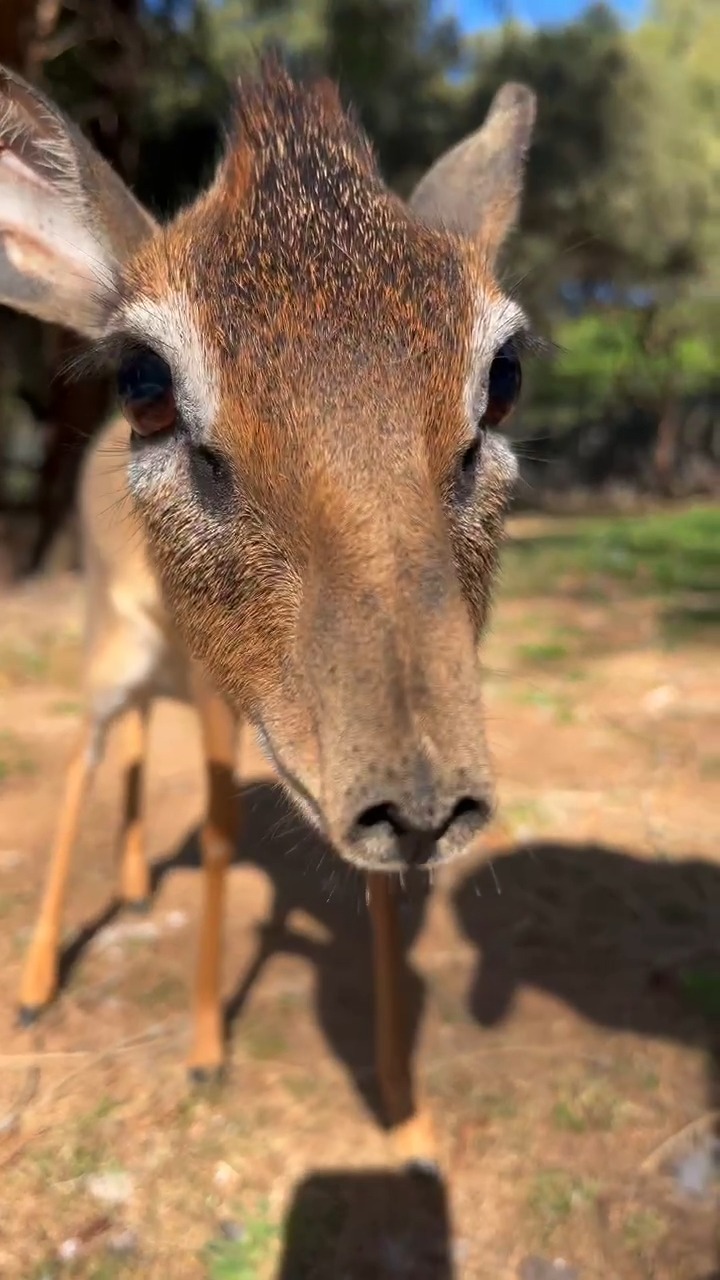- The dik-dik antelope: biological characteristics and unique behavioral traits.
- The significance of dik-dik’s alarm call and its role in their survival.
- Conservation efforts: challenges and success stories of dik-dik populations.
- The role of zoological institutions like the San Diego Zoo in educating the public about lesser-known species.
- The importance of public awareness and community engagement in wildlife conservation.
Dik-diks are a small species of antelope found primarily in the bushlands and savannas of Eastern and Southern Africa. These diminutive creatures stand at a mere 12 to 16 inches at the shoulder, weighing between 6 to 13 kilograms. They are characterized by their small size, elongated snouts, and prominent preorbital glands, which they use to mark territory. One of the standout features of dik-diks is their ability to go extended periods without water, obtaining necessary hydration through their diet of leaves, shoots, and fruit. This adaptation allows them to thrive in arid environments where water is scarce.
A lesser-known fact about dik-diks is the sound they make when startled. Named for the whistling alarm call they emit through their mobile noses, this call serves as a critical survival mechanism. The dik-dik’s distinctive alarm alerts other animals to potential danger, such as approaching predators. This sound, which gives the dik-dik its name, can travel considerable distances, serving as a communal warning system in the animal kingdom. Despite their small stature, their vocal warnings are essential in the ecosystem, showcasing how even the smallest animals play a pivotal role in maintaining ecological balance.
Conservation is a pressing issue for dik-dik populations. Although not currently classified as endangered, habitat destruction and hunting pose significant threats to their survival. Human encroachment on natural habitats often leads to diminished resources and increased vulnerability to predators. In some areas, dik-diks are hunted for their skins, which are used to make gloves. Conservation efforts focus on habitat preservation and anti-poaching measures, with particular emphasis on regions where human development threatens to encroach further into the wilderness.
Zoological institutions, such as the San Diego Zoo, play a crucial role in conservation by providing safe environments for dik-diks and other species to thrive. These institutions serve not only as refuges for animals but also as educational platforms for the public to learn about diverse species. By showcasing animals like the dik-dik, zoos raise awareness about the importance of biodiversity and the need for conservation efforts. They help teach visitors about the behavioral traits and ecological contributions of lesser-known species, promoting a deeper understanding and appreciation for wildlife.
Public awareness and community engagement are vital components of wildlife conservation. When people are educated about the significance of every species, including the small and seemingly insignificant, they are more likely to participate in conservation efforts. This involvement can range from supporting policy changes and habitat restoration projects to guiding personal lifestyle changes that reduce human impact on the environment. Community-driven initiatives, supported by strong educational outreach, can foster a sense of responsibility and empowerment among individuals to contribute positively to wildlife preservation.
Throughout the dik-dik’s narrative, the blend of their unique biological traits, the critical role of their alarm calls, and the broader conservation challenges underscores a powerful call to action. By highlighting the engaging aspects of dik-diks, from their ecological capabilities to their pivotal role in ecosystems, this article aims to inspire a deeper connection with the natural world and support proactive measures in conservation practices.
*****
Source Description
We see your micro dik-dik @sandiegozoo, and raise you an average-sized dik-dik 🫡
Though Chickpea is waaay above average in our hearts. All jokes aside, these adorable little antelopes are actually named after the whistling alarm call they make when they are startled that’s produced through their wiggly noses.


